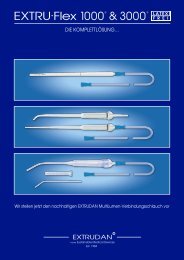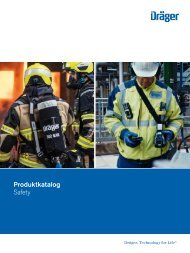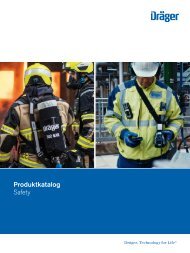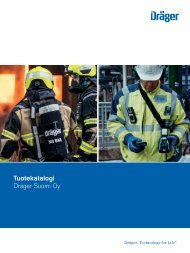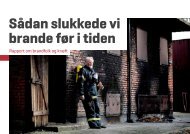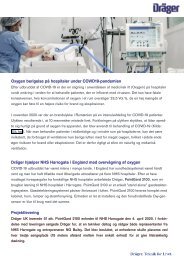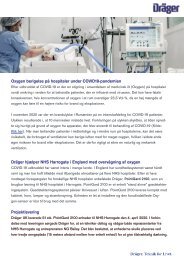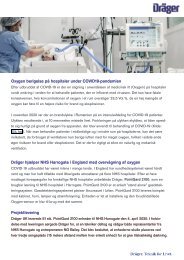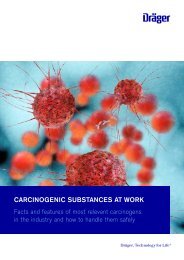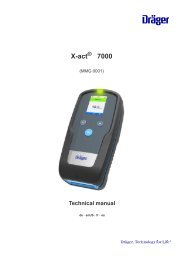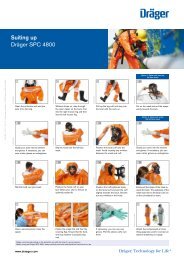Neonatal-Non-Invasive-Ventilation-NIV
Neonatal intensive care continues to be one of the most challenging fields in medicine. Fortunately years of experience from careful clinical observation, meticulous research and plenty of tender loving care have helped to significantly increase the chances of survival for our tiny patients. This booklet is an attempt to address the current development process of noninvasive ventilation therapies, both from a theoretical and a practical standpoint.
Neonatal intensive care continues to be one of the most challenging fields in medicine. Fortunately years of experience from careful clinical observation, meticulous research and plenty of tender loving care have helped to significantly increase the chances of survival for our tiny patients. This booklet is an attempt to address the current development process of noninvasive ventilation therapies, both from a theoretical and a practical standpoint.
Create successful ePaper yourself
Turn your PDF publications into a flip-book with our unique Google optimized e-Paper software.
38 I 4. LITERATURE<br />
77. Schmölzer GM, Kumar M, Pichler G, Aziz K, O’Reilly M, Cheung PY. <strong>Non</strong>-invasive<br />
versus invasive respiratory support in preterm infants at birth: systematic<br />
review and meta-analysis. BMJ. 2013; 347: f5980.<br />
78. Steinhardt A, Hinner P, Kühn T, Roehr CC, Rüdiger M, Reichert J. Influences<br />
of a dedicated parental training program on parent-child interaction in preterm<br />
infants. Early Hum Dev. 2015; 9: 205-10.<br />
79. Stoll BJ, Hansen NI, Bell EF et al. Eunice Kennedy Shriver National Institute of<br />
Child Health and Human Development <strong>Neonatal</strong> Research Network. <strong>Neonatal</strong><br />
outcomes of extremely preterm infants from the NICHD <strong>Neonatal</strong> Research Network.<br />
Pediatrics. 2010; 126: 443-56.<br />
80. te Pas AB, Siew M, Wallace MJ, Kitchen MJ, Fouras A, Lewis RA, Yagi N, Uesugi<br />
K, Donath S, Davis PG, Morley CJ, Hooper SB. Establishing functional residual<br />
capacity at birth: the effect of sustained inflation and positive end-expiratory<br />
pressure in a preterm rabbit model. Pediatr Res. 2009; 65: 537-41.<br />
81. Trippenbach T. Pulmonary reflexes and control of breathing during development.<br />
Biol Neonate. 1994; 65: 205-10.<br />
82. Vyas H, Field D, Milner AD, Hopkin IE. Determinants of the first inspiratory volume<br />
and functional residual capacity at birth. Pediatr Pulmonol. 1986; 2: 189-93.<br />
83. Weichert A, Weichert TM, Bergmann RL, Henrich W, Kalache KD, Richter R,<br />
Neymeyer J, Bergmann KE. Factors for Preterm Births in Germany - An Analysis<br />
of Representative German Data (KiGGS). Geburtshilfe Frauenheilkd. 2015; 75:<br />
819-826.<br />
84. Yoder BA, Stoddard RA, Li M, King J, Dirnberger DR, Abbasi S. Heated, humidified<br />
high-flow nasal cannula versus nasal CPAP for respiratory support in<br />
neonates. Pediatrics. 2013; 131: e1482-90.<br />
85.Zivanovic S, Roehr CC. One Step Further Toward Defining the Optimal Respira<br />
tory Care Package for Neonates: Interventions to Successfully Extubate Preterm<br />
Infants. JAMA Pediatr. 2017; 171: 120-121.<br />
86. Milési et al., 2014, High-Flow nasal cannula: recommendations for daily practice<br />
in pediatrics, Ann Intensive Care 2014, 4: 29.




